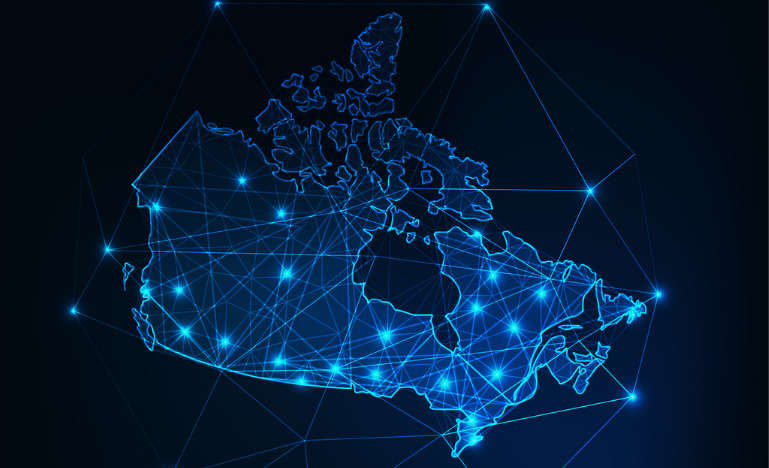We need access to justice and the internet
The lived realities of Indigenous communities during the pandemic shed light on the urgency of addressing the tech divide.

It has just been over a year since COVID-19 became a part of our everyday language and lives in Canada. I am sure we all remember where we were, who we were with and what we were doing when we first heard the phrase “stay home and stay safe.” Thinking back, I had heard about Zoom, I had video conferenced into meetings on occasion, but nothing I could imagine would compare to what the future would bring. I quickly became best friends with Zoom, and now, can confidently add “Zoom Technician” to the list of services I provide to my clients.
The world halted… and that included our Indigenous communities. Buildings shut down, the streets emptied, and people stayed home listening to the radio or watching the news anxiously awaiting word of when things would get back to normal. All my meetings with Indigenous clients were cancelled. All of my meetings with non-Indigenous agencies continued online with Zoom, Teams or Google Meets.
When the world went virtual, there was a universal assumption in Canada, a nation known for its favourable social and economic conditions, that everyone had access to computers and the internet. As lawyers, we were privileged to receive updates in the legal world from our law societies. The legal world could not stop and quickly had to go online. Lawyers didn’t have to wear suits, only dress shirts and blazers to appear as though we were in full suit attire while on camera in virtual court.
Unfortunately, internet access is a not a universal right. Mind you, access to clean drinking water is a universal right according to the United Nations, and many First Nations communities in Canada don’t have access to that. So it’s hardly surprising that in many communities, connection can be good in some places and non-existent in others. Employees were being prepared to work from home- with the hope they had reliable internet access and the technology needed to access virtual services. Weeks into the pandemic, many people in Indigenous communities still did not have access to their emails. Where once we were used to instant replies and even expected it, during the pandemic it often took days, weeks and months before hearing back from some Indigenous communities.
Indigenous communities in Canada went into lockdowns that mirrored those we saw in Europe. Roadblocks were put up and community members took on responsibilities of patrolling every road in and out of the community. Members who wanted to enter or leave had to give notice and receive permission to do so. It was similar to when Indian Affairs implanted the pass system on reserves. But this time we implemented it to keep the world from bringing in COVID-19.
Can you imagine how this impacted communities and their access to justice? Many of them already had to travel up to 2 hours to get to the nearest courthouse. And now, court was virtual, and with internet service either not accessible or reliable, many communities were left behind.
A huge barrier to reliable internet services on reserve and in rural areas is finding a service provider. Finding a service provider who will come and set up services or perform maintenance on existing services during a global pandemic amplified this barrier. There are dead zones for cell phone services in many rural areas. If you did have cell phone service, the question was whether it was strong enough to stream a Zoom meeting? Unfortunately, access is not always easy. I teach a Business Law class using Zoom. Many of my students reside on reserve and either cannot turn their cameras on or have to drive to find cell phone service just so they can log on to class.
I recently read a case involving Child and Family Services. The director stated that they had served a First Nation Community on March 18, 2020 and received no reply. How do you conduct service on a community that you cannot access? That was just days after schools were shut and after businesses had closed. People were in fear, panic buying toilet paper, worrying about if they would have jobs or be able to feed their families... I often wonder how that service played out. How do communities respond to court cases and become engaged when it is a pandemic? Do we assume no response means non-engagement?
We are now entering another wave of the pandemic with the variants and so it’s important to remember not everyone has access to this justice system in ways that seem easy to us.
When our courts went online, it was a learning curve, but I could navigate the process. I had helpful emails from the courts and the Law Society. Yes, there are benefits: It is sometimes easier for lawyers to attend court, travel time is reduced and safety concerns about travelling during bad weather is almost non-existent. As we move forward through the pandemic, gather more information and increase immunizations, we might come to think a combination of legal services delivered online and in-person is ideal. But it must not be at the expense of those who need access the most. Supports must be created for people, and services need to be facilitated virtually. There is a reality out there that is outside of our legal bubble that we need to consider.
If we take anything from this pandemic let it be patience, compassion and understanding that we are all in the same storm, but definitely not the same boats.


